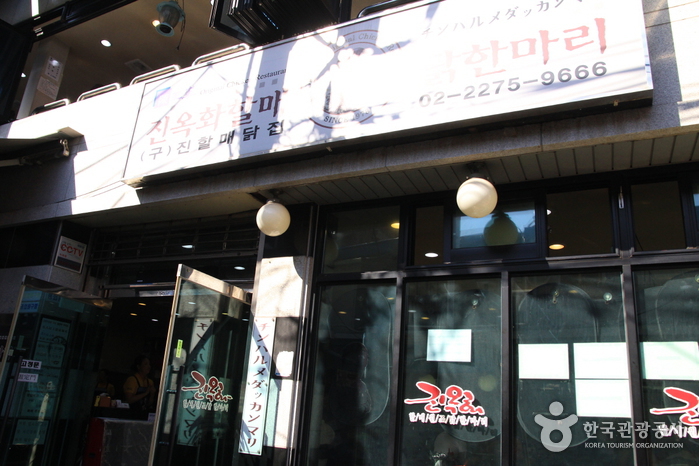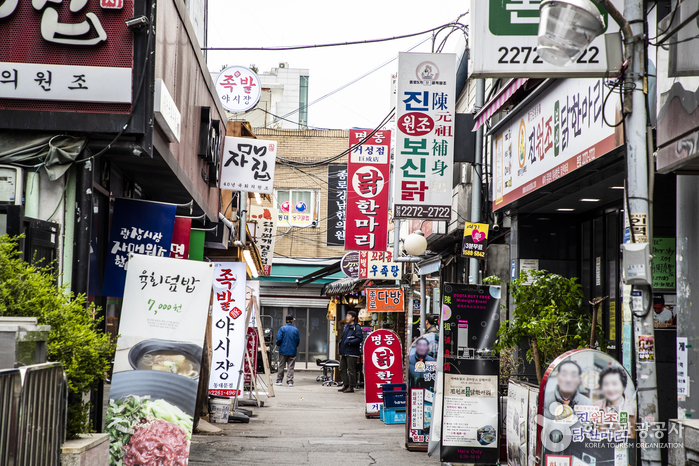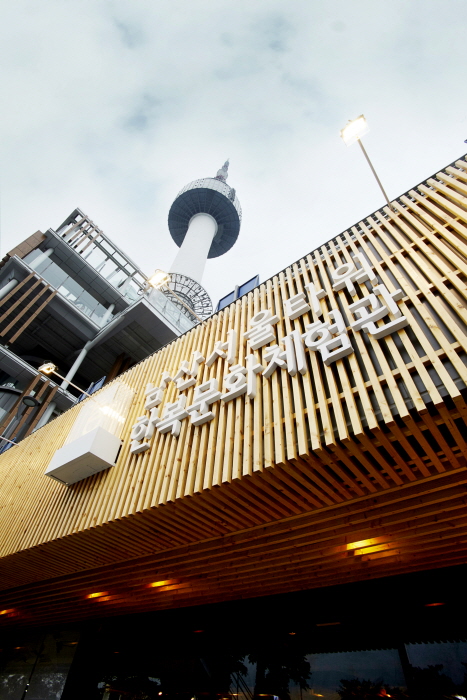Jinokhwa Halmae Wonjo Dakhanmari (진옥화할매원조닭한마리)
2.1Km 2024-03-04
18 Jong-ro 40ga-gil, Jongno-gu, Seoul
+82-2-2275-9666
Jinokhwa Halmae Wonjo Dakhanmari is a renowned restaurant located in the alley of whole chicken soup near Dongdaemun Market, operating since 1978. Its specialty is dakhanmari (whole chicken soup), a whole chicken boiled in savory and rich broth. Adding finely chopped green onions enhances its refreshing flavor. The chewy rice cakes dipped in the seasoned sauce are also delightful. Additionally, it's customary to enjoy the remaining broth by mixing it with seasoning sauce and noodles, creating a delicious kalguksu (noodle soup).
CheongKwanJang - Dongdaemun Market Branch [Tax Refund Shop] (정관장 동대문시장)
2.1Km 2024-04-19
252, Jong-ro, Jongno-gu, Seoul
-
Dongdaemun Dak Hanmari Alley (서울 동대문 닭한마리 골목)
2.1Km 2024-03-04
37-7, Jongno 5(o)-ga, Jongno-gu, Seoul
+82-2-2236-9135
Located near the Dongdaemun Market, Dongdaemun Dak Hanmari Alley gets its name from the restaurants serving dak hanmari (whole chicken soup) that line the alley. Dak hanmari (whole chicken soup), literally “one whole chicken” in Korean, is a dish where a whole chicken is boiled in a soup and served with the alley’s special sauce. After the diners eat the meat, the broth is used to make kalguksu (noodle soup). Because the area is home to large-scale apparel and fashion material markets of the Dongdaemun Market, the district is always lively and bustling.
Seoul National University Hospital (서울대학교병원)
2.1Km 2025-10-23
101 Daehak-ro, Jongno-gu, Seoul
Seoul National University Hospital, a national central hospital that has led Korean medicine for over 130 years, is a top-tier hospital equipped with world-class medical professionals and cutting-edge systems. For 25 consecutive years, it has ranked first in brand power in the hospital sector. The hospital is renowned for its cancer research, the most comprehensive pediatric care in the country, and treatments for rare and intractable diseases. Through patient-centered, personalized services, it has established itself as a trusted healthcare institution.
Namsan Seoul Tower Hanbok Culture Experience Center (남산서울타워 한복문화체험관)
2.1Km 2021-03-16
105, Namsangongwon-gil, Yongsan-gu, Seoul
Namsan Seoul Tower Hanbok Culture Experience Center is located in the lobby level (B1) of Seoul's landmark Namsan Seoul Tower. The center is designed around the theme of the Joseon dynasty, and features both large photo zones and hanbok of various styles, ranging from traditional to modern and even wedding.
N Seoul Tower (남산서울타워)
2.1Km 2025-10-23
105 Namsangongwon-gil, Yongsan-gu, Seoul
+82-2-3455-9277
Namsan Seoul Tower was the first multipurpose tower to be established in Korea, effectively incorporating a sightseeing observatory into a broadcasting tower. For the past 40 years, Namsan Seoul Tower has served as an iconic landmark of Korea and a representative tourist attraction. The tower's observatory offers an unobstructed view of the whole city, allowing it to become one of the all-time favorite attractions of Seoul citizens as well as domestic and international tourists. Featured in many dramas and reality shows, it is also a fan-favorite destination. Another highlight of the tower is the Namsan Cable Car. The cable car began its operation in 1962, transferring passengers from the foot of the mountain to the base of the tower. Shuttle buses to the Namsan Cable Car from downtown Seoul are also available for visitors' convenience.
◎ Travel information to meet Hallyu’s charm
In TXT’s content “TALK X TODAY,” the youngest members, Huening Kai and Taehyun, enjoyed a day out in their school uniforms. They rode the cable car to the top, took pictures together, and secured their wish lock. You can purchase locks at the souvenir shop near the cable car station at the top of the mountain, where name pens are also available to write down your wishes.
HANCOOK N Seoul Tower (한쿡 N서울타워)
2.1Km 2024-03-15
(Tower 3F), 105, Namsangongwon-gil, Yongsan-gu, Seoul
+82-2-3455-9292
HANCOOK is a Korean restaurant located within the N Seoul Tower, from which one can see the entirety of Seoul. The restaurant presents the traditional flavors and food culture of Korea through its Lunch and Dinner Special Courses, as well as nearly 30 a la carte menu. The latter includes Bulgogi bibimbab bansang (Grilled bulgogi bibimbap) and chamsut hanu gui bansang (charcoal-grilled Korean beef & cold buckwheat noodles).
THE PLACE Dining(더플레이스다이닝)
2.1Km 2024-03-08
ソウル特別市ヨンサン区ナムサンゴンウォンギル105
+82-2-3455-9220
THE PLACE Dining(ザ・プレイス・ダイニング)はNソウルタワーにあるイタリアンレストランです。窓の外が見えるカップル専用席でピザやパスタなどをワインと一緒に楽しめます。ルーフトップガーデンテラスと空中遊歩道からはタワー一帯のソウル市街が見下ろせます。シグネチャーメニューは予約必須のスペシャルコースとポーターハウスです。予約は電話でのみ受け付けています。
n.GRILL (엔그릴)
2.1Km 2024-03-08
(7F, N Seoul Tower), 105, Namsangongwon-gil, Yongsan-gu, Seoul
+82-2-3455-9297
n.GRILL is a French restaurant located on the seventh floor, the highest floor in the N Seoul Tower. The restaurant rotates 360 degrees, so one can enjoy the food with the view of Seoul. n.GRILL is particularly famous as a place for marriage proposals, thanks to its beautiful view of Seoul at night. It is a perfect place for those who want special spaces and events.

![CheongKwanJang - Dongdaemun Market Branch [Tax Refund Shop] (정관장 동대문시장)](http://tong.visitkorea.or.kr/cms/resource/33/2878233_image2_1.jpg)

![5F N Gift [Tax Refund Shop] (5F N기프트)](http://tong.visitkorea.or.kr/cms/resource/40/2878440_image2_1.jpg)




 English
English
 한국어
한국어 日本語
日本語 中文(简体)
中文(简体) Deutsch
Deutsch Français
Français Español
Español Русский
Русский